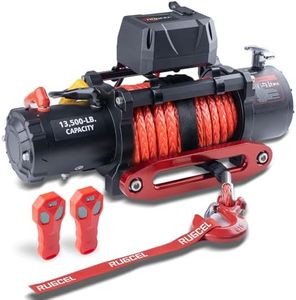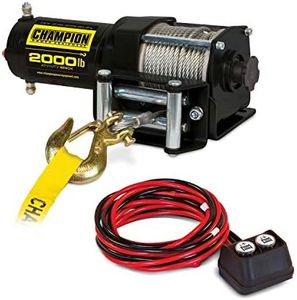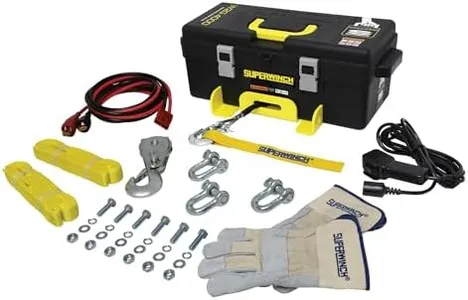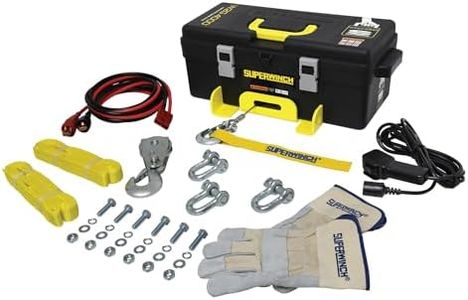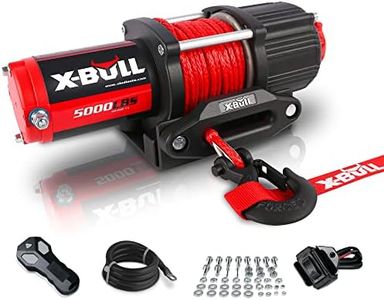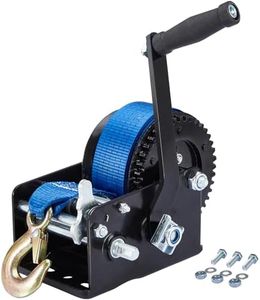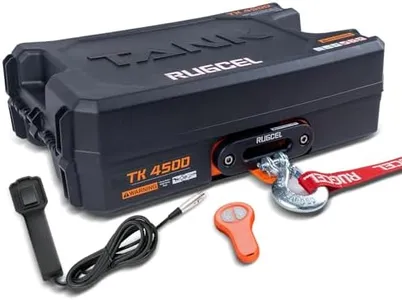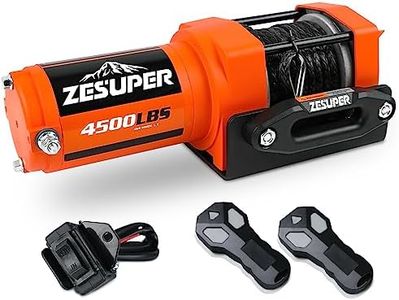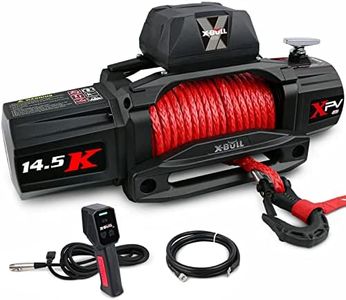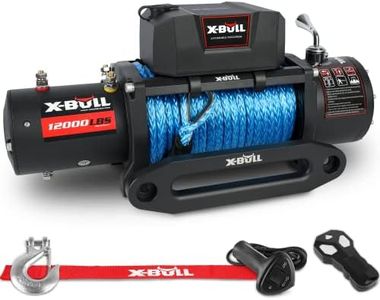We Use CookiesWe use cookies to enhance the security, performance,
functionality and for analytical and promotional activities. By continuing to browse this site you
are agreeing to our privacy policy
10 Best winches
From leading brands and best sellers available on the web.By clicking on a link to a third party's website, log data is shared with that third party.
Buying Guide for the Best winches
Choosing the right winch is important, whether you're looking to recover your vehicle, pull heavy items, or use it for other specialized applications. The main factors you should consider are what you plan to use it for, the weight you need to pull, and how often you'll use the winch. Start by thinking about the typical scenarios where you'll rely on the winch, as this will help you identify what features and ratings matter most for your needs.Pulling CapacityPulling capacity refers to the maximum weight a winch can safely pull, usually measured in pounds or kilograms. This is the single most important rating, as it determines what you can recover or move. Light-duty winches generally have a pulling capacity under 4,000 lbs, making them suitable for ATVs, small trailers, or utility tasks. Medium-duty winches range from about 4,000 to 9,000 lbs and are often used for SUVs or mid-sized trucks. Heavy-duty winches can pull 9,000 lbs or more and are ideal for large trucks, off-road vehicles, or demanding work sites. To pick the right capacity, consider the weight of the heaviest item or vehicle you’ll pull and include a safety margin (often 1.5 times the vehicle's weight for recovery).
Line TypeThe winch line or cable can be made of steel or synthetic materials. Steel cables are highly durable and resist abrasion, making them suitable for rough environments, but they can develop sharp burrs and store a lot of energy under tension. Synthetic ropes are lighter, easier to handle, and safer because they store less kinetic energy (so they're less dangerous if they snap), but they can be prone to abrasion and need to be kept clean. Choose steel if you frequently use your winch around rocks or harsh terrain, or synthetic if easy handling and safety are more important to you.
Motor TypeWinches use electric or hydraulic motors. Electric winches are the most common, powered by your vehicle’s battery and easier to install. Hydraulic winches are driven by the vehicle’s power steering pump and can operate continuously as long as the engine is running. Electric models are great for occasional or recreational use, whereas hydraulic is best for heavy, frequent, or industrial tasks where overheating can be an issue. Think about how often you’ll use your winch and how long each pull will take to decide which motor type fits best.
Line SpeedLine speed is how quickly the winch can reel in the rope under load. Faster line speed means less waiting, but sometimes comes at the expense of pulling power. If you need to make quick recoveries, line speed matters more, but for heavy pulling, slower speeds with more power are safer and more practical. Assess if you value speed or if the main concern is safely moving heavy loads.
Remote ControlRemote control allows you to operate the winch from a distance, using either a wired or wireless system. Wired remotes are reliable and don’t require batteries, but limit your range. Wireless remotes add convenience and allow you to stand further away for safety, especially in tricky recoveries. Consider how important flexibility and safety distance are in your typical usage when deciding if remote control is a must-have.
Mounting OptionsWinches can be mounted on fixed points (like a bumper) or used with portable mounts that allow you to attach the winch to different locations on a vehicle or trailer. Fixed mounting is more robust and ready for immediate use, while portable mounts give you versatility. Consider how you expect to use your winch and whether permanent attachment or flexibility matters more.
Drum Size and Rope LengthThe drum size determines how much rope or cable your winch can hold, which affects how far you can pull or recover. A longer rope gives you more flexibility but can sometimes reduce the pulling strength and power. Think about the typical distances you might need to pull and balance that with the winch’s power rating to make the best choice.

